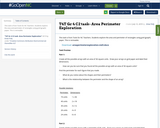
This task is from Tools for NC Teachers. Students explore the area and perimeter of rectangles using grid (graph) paper. This is remixable.
- Subject:
- Mathematics
- Material Type:
- Activity/Lab
- Formative Assessment
- Date Added:
- 07/13/2019

This task is from Tools for NC Teachers. Students explore the area and perimeter of rectangles using grid (graph) paper. This is remixable.
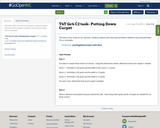
This task is from Tools for NC Teachers. Students explore and solve word problems related to area and perimeter. This is remixable.

These Tasks are from Tools4NCTeachers. These Tasks align to 4.MD.3. These are remixable.
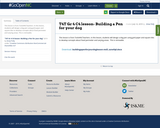
This lesson is from Tools4NCTeachers. In this lesson, students will design a dog pen using grid paper and square tiles to develop concepts about fixed perimeter and varying areas. This is remixable.

This lesson is from Tools4NCTeachers. In this lesson, students find the area of different sized dog pens when given a fixed area. Students determine which pen would give Eddie the maximum amount of space and justify their choices. This is remixable.

This lesson is Tools4NCTeachers. In this lesson, students find the area of rectilinear figures with known side lengths and justify which home would be the best home for Larry. This is remixable.

In this lesson, students apply concepts of area and perimeter to solve multi-step problems involving real-world examples. This lesson will take 2-3 days.
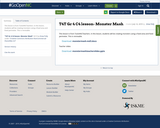
This lesson is from Tools4NCTeachers. In this lesson, students will be creating monsters using a fixed area and fixed perimeter. This is remixable.
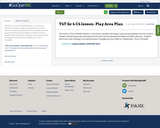
This lesson is from Tools4NCTeachers. In this lesson, students will design a play area by dividing it into four sections. Students will decompose the total play area into parts by decomposing the length and width measures. Students will connect their drawing to the partial products strategy and area model for multiplication. This is remixable.
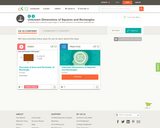
This short video and interactive assessment activity is designed to teach third graders about given the perimeter, find the side length and area - squares.

Students apply their knowledge of scale and geometry to design wearables that would help people in their daily lives, perhaps for medical reasons or convenience. Like engineers, student teams follow the steps of the design process, to research the wearable technology field (watching online videos and conducting online research), brainstorm a need that supports some aspect of human life, imagine their own unique designs, and then sketch prototypes (using Paint®). They compare the drawn prototype size to its intended real-life, manufactured size, determining estimated length and width dimensions, determining the scale factor, and the resulting difference in areas. After considering real-world safety concerns relevant to wearables (news article) and getting preliminary user feedback (peer critique), they adjust their drawn designs for improvement. To conclude, they recap their work in short class presentations.